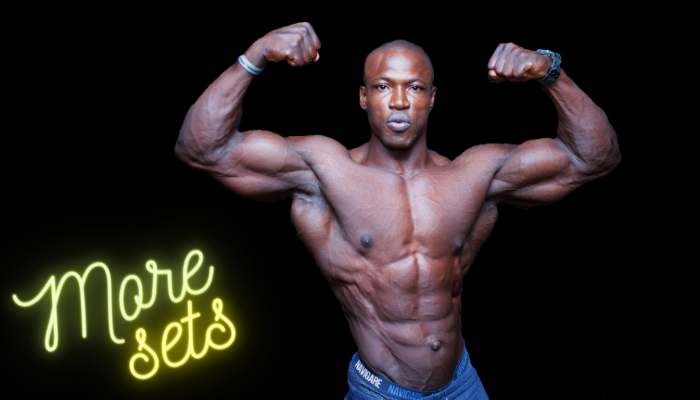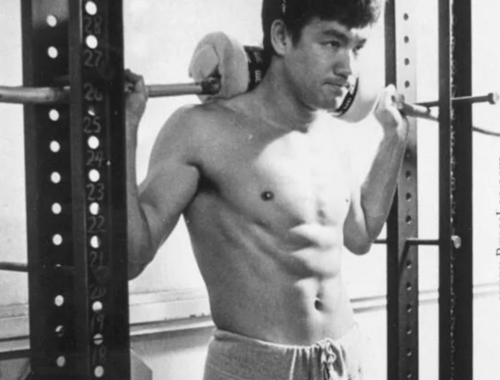
DOES DOING MORE SETS INCREASE MUSCLE MASS?
Achieving an adequate rate of muscle mass is an important factor not only in terms of aesthetics but also in terms of health. Apart from the obvious function of making movement possible, another very decisive and important function is that of maintaining body heat and energy balance, since muscle mass is one of the tissues with the highest energy demand in the body.
Muscle plays a central role in metabolic health and metabolism. Over the past two decades, it has become evident that skeletal muscle functions as an endocrine organ, which can produce and secrete hundreds of myokines that exert their effects in an autocrine, paracrine or endocrine manner in response to exercise.
Muscle mass can improve protein synthesis, decrease sarcopenia, chronic low-grade inflammation, lipotoxicity and, in turn, increase mitochondrial function, insulin sensitivity, glucose transporter protein GLUT4 and even improve immune function.
The benefits of practicing strength exercises are many and scientifically proven, however, the vast majority of people prioritize cardio sports because they believe it is the best for fitness and weight loss, although this is not entirely true. Strength exercises improve the functionality of the muscle allowing us to develop our daily activities with much more ease, such as climbing stairs, lifting weights, jumping or running, but also increases our metabolic expenditure, increases insulin sensitivity, helps to lose weight in the visceral area and prevents a major problem of our time which is sarcopenia and dinapenia.
So which is better, strength or cardio? The reality is that there is no one benefit over the other when it comes to the type of training. Which is better ibuprofen or an antihistamine? If what you have is inflammation and pain the indicated is ibuprofen, but if what you have is allergy then the antihistamine, as it happens with exercise.
Strength training has many effects on muscle architecture and function, while cardio exercise has more benefits at the cardiovascular level, but both are necessary to have a good level of fitness, although this ratio is altered when we get older, in which case in strength training all more preeminence.
Therefore, the ideal is to make combinations of both and not to focus only on one of the types of exercises, but to integrate them so that the training is complete and healthier. Endurance training is very good for our health, if we want to improve our oxidative capacity, our ventilatory capacity or our maximum oxygen consumption, it is essential in our planning. However, the power and muscular capacity component is only achieved with strength training. Moreover, in this type of training, neural adaptations are higher and so is myofibrillar protein synthesis.

Tips for increasing muscle mass
The main factors affecting muscle gain are: genetics, sex, age, previous training status, the athlete’s experience, nutritional intake status (Protein Balance), rest and recovery processes, and of course, the type of training.
In this sense, according to the expert, we must take into account the exercises, the type of muscular action, the periodization and the intensity and volume of the load, without neglecting the recovery processes, since as the subject gains practical experience, rest becomes more important in the hypertrophy process. If we do not control or balance all these factors, hypertrophy or muscle mass gain will be compromised.
Depending on these variables and with proper nutrition and supplementation, it is possible to gain and increase muscle mass.
Regarding the «ideal» training to gain muscle mass, UPM researchers led by Benito have elaborated a study to analyze which programs allow us to obtain the muscle mass index recommended by professionals. In this work, published in the International Journal of Environmental Research and Public Health, the authors found that strength training has the greatest influence on muscle development while other personal variables seem to be less important.
There does not seem to be a significant difference according to the age or previous status of the participants, the only variable that inversely moderates muscle growth is the number of exercise sets. Contrary to what one might think, an excess of exercise sets negatively affects muscle growth.
But then, what would it be reasonable to expect from a training program? The researchers answer: «After studying with a meta-analysis program more than 4,500 scientific publications 111 articles (158 study groups) we discovered the average variations that occur in muscle mass as a function of two of the most frequent ways that exist to show muscle mass, in the form of fat-free mass (FFM average change of 1. 56 [1.23, 1.89 CI] kg), in the form of lean mass (LMM average change of 1.65 [1.28, 2.01 CI] kg), with the average change typically being 1.5 kg over a 12-week intervention.» Therefore, excessive sets per workout could negatively affect muscle mass gain.
Doing more sets or reps does not necessarily help to increase muscle mass. Different types of training routines are known and there is always debate about which one is better or worse, but it will always depend on the individual and the capabilities he or she has. Thus, you can develop fullbody routines where every day you work more than 3 different muscle groups with no difference between movement patterns or do a routine divided by groups of two or by muscle groups, that is, every day of the week you work a different muscle group and at most between 1 and 3 muscle groups per day.
Combined workouts
Benito’s advice is to combine Weider-style routines and fullbody routines, although more than the type of routine, the most essential thing is the weekly stimulus that each muscle group receives, as long as the rest of the variables of the model or person in which the intervention is applied remain constant.
Although it is not possible to generalize the results that the person wants, since all training and results will depend on the type of patient, it is proposed, for example, to perform a minimum of 2-3 series per exercise and increase, little by little, to 4-6 series. This could give an even greater response. The routine will depend on the «time and preferences of the person» but with a minimum of 3 days of training per week, recommending 5-6 days of training with divided groups, would be acceptable. In all this process it is important, in addition, the protein intake of 1.6 -1.8 g/kg of weight and, of course, the rest between sets of just over 60 seconds and less than 2-3 minutes depending on each person.

Brown Fat May Be The Key To Fat Loss
También te puede interesar

Bruce Lee Muscle Training ( MARTIAL ARTS TRAINING )
diciembre 20, 2020
THE HEALTH BENEFITS OF EGGS
mayo 12, 2022
